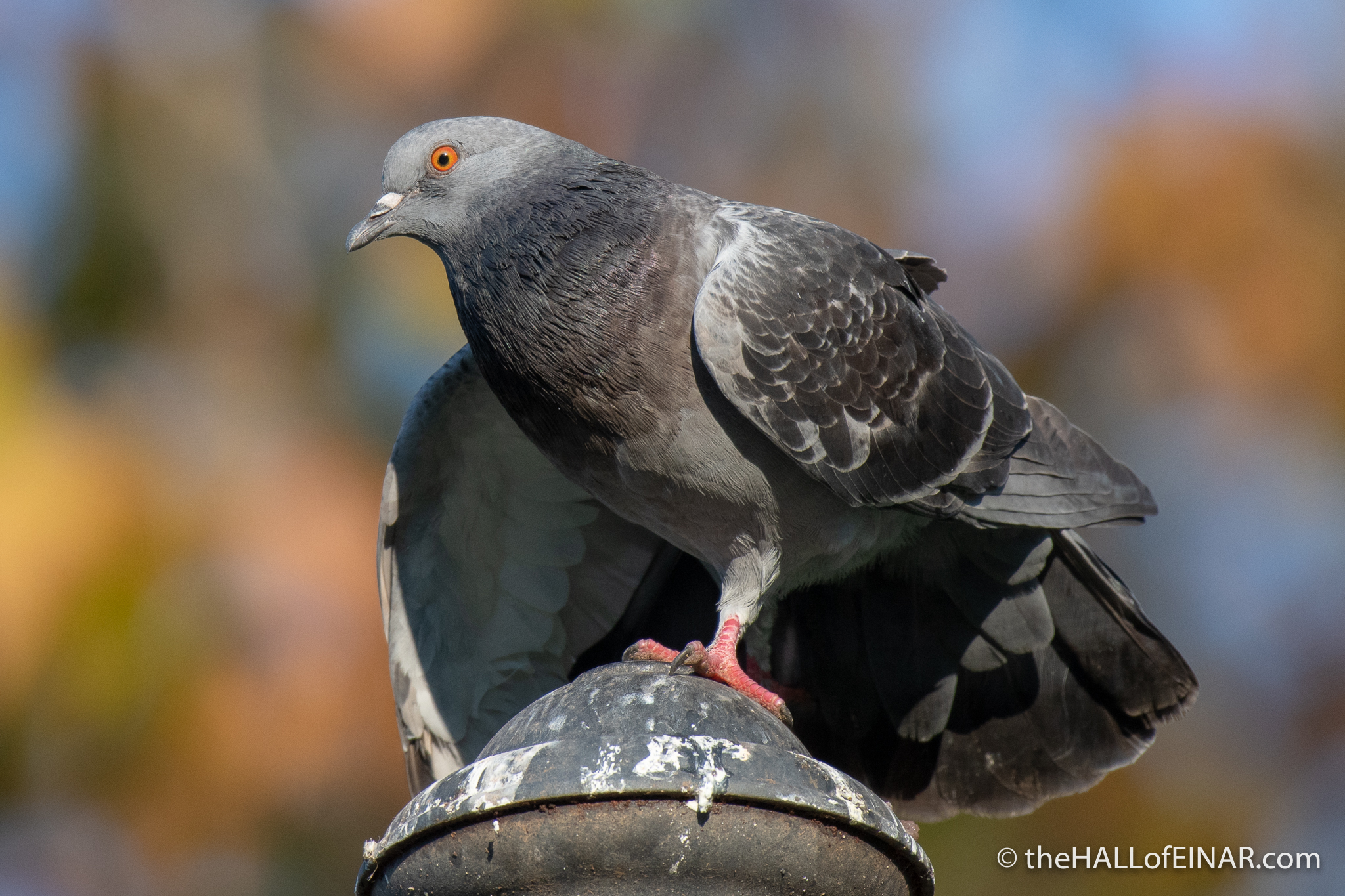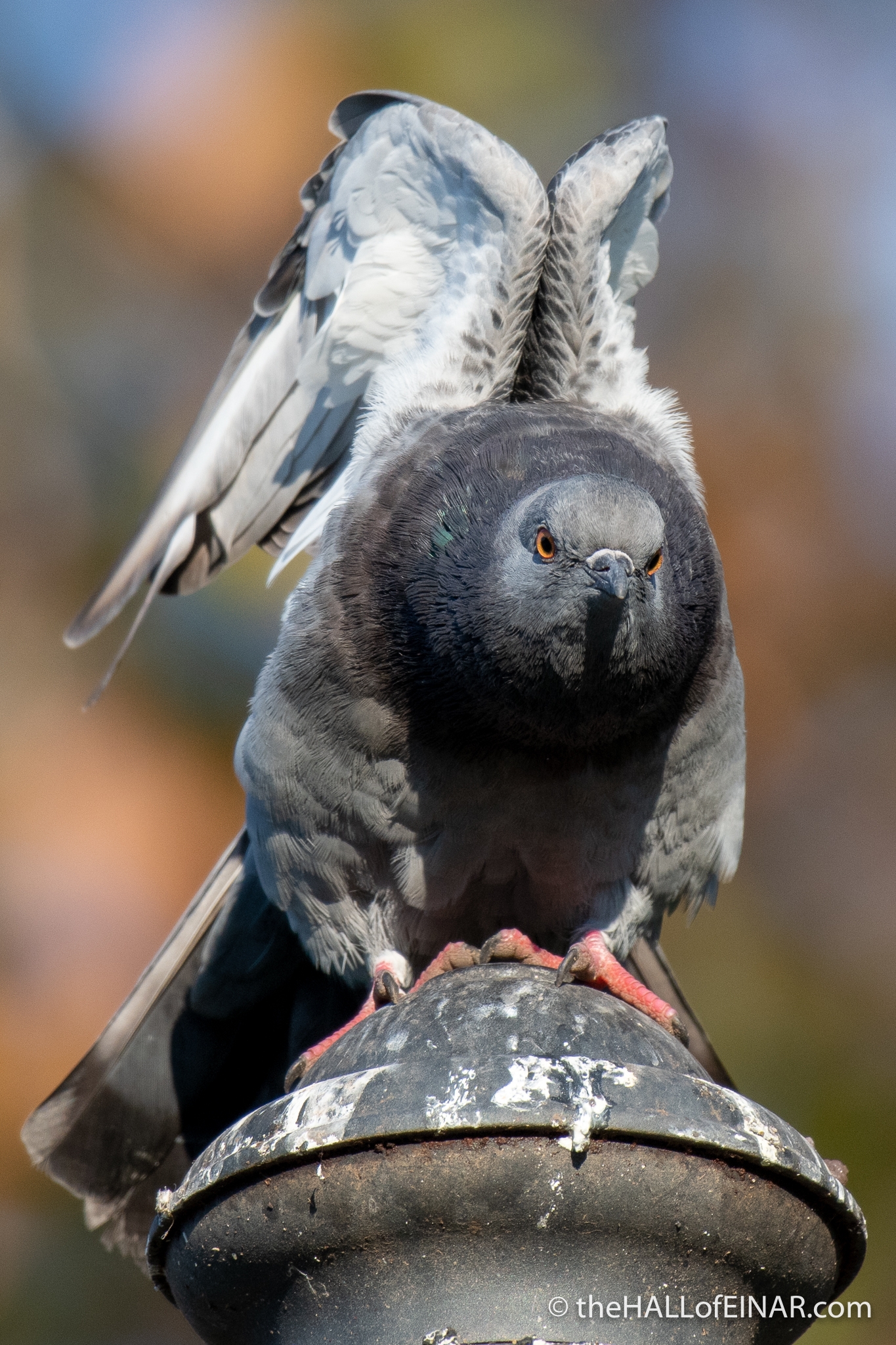Urban wildlife
I’m spending a few days in Rome. I’m meandering around the back streets, ambling through city parks and strolling along the banks of the River Tiber, or, as it’s called here, the Tevere. I check the weather forecast: it’s November and the forecast is for sun all day every day and for midday temperatures of 20 degrees C. That will do me nicely. It’s cold in the mornings, though. On the Metro on the way in to the centre I see Romans with their characteristic layers: there’s a man with a smart jacket worn over a quilted top over a lambswool v-neck pullover over a smart shirt. Classic, effortless Roman style.
I start at the Giardini di via Carlo Felice. There’s a feral pigeon at the top of a lamp post:

The garden is just a long strip of land between two busy roads. There’s the loud hum of traffic on all sides. I can hear a Black Redstart calling from the trees. Many birds have evolved to sing louder in cities just to make themselves heard. The ones with stronger songs ended up having more breeding success in this noisy urban environment. It’s just one of the many unintended evolutionary consequences of human development on urban wildlife.

This pigeon was wonderful to watch in the early morning light, especially with the colours of autumn leaves and the early blue sky behind.
In the UK, air pollution from tiny particles from cars is responsible for the equivalent of 29,000 people’s deaths per year. That’s 17 times more than die in car collisions. Just imagine what that pollution does to our urban wildlife. It’s not just ourselves that we’re killing, it’s our wildlife as well. The same must be true in Rome.
This pigeon looks angry about something.

At the end of the park is a huge statue of St Francis of Assisi, the Monumento a San Francesco d’Assisi. This morning there’s a trinity of pigeons occupying the convenient man-made perches:

St Francis is the patron saint of Italy, but is also known as a friend of animals and the natural environment. He even preached to the birds. I wonder how much notice they took of him? Pope John Paul II declared Saint Francis the Patron Saint of Ecology. Before you get too carried away about the Catholic Church’s commitment to environmental justice though, the Catholic Church also has a patron saint of Arms Dealers, St. Adrian of Nicomedia and a patron saint of hunters, Saint Hubertus. I wonder if they have a patron saint of each-way bets?
St Francis is also, informally, the patron saint of bomb disposal experts. That’s because if you die in an explosion while diffusing a bomb, there is little left of your body except food for the birds. Dark humour is obviously the bomb disposal squad’s speciality.

The birds are keeping San Francesco company now.

I have the whole day to explore, interrupted only by wonderful coffee, immaculate pastries and a lunch to diet for. I’m looking forward to updating you on my progress.